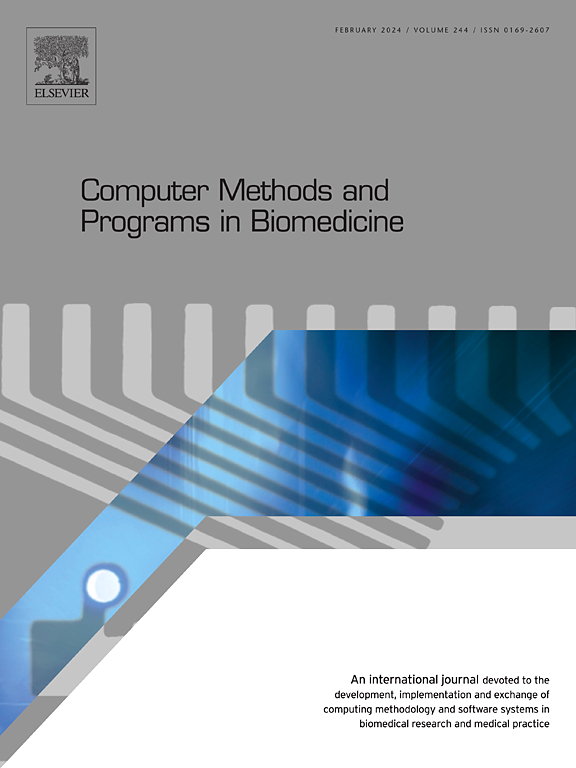Advancing hierarchical neural networks with scale-aware pyramidal feature learning for medical image dense prediction
IF 4.9
2区 医学
Q1 COMPUTER SCIENCE, INTERDISCIPLINARY APPLICATIONS
引用次数: 0
Abstract
Background and Objective:
Hierarchical neural networks are pivotal in medical imaging for multi-scale representation, aiding in tasks such as object detection and segmentation. However, their effectiveness is often limited by the loss of intra-scale information and misalignment of inter-scale features. Our study introduces the Integrated-Scale Pyramidal Interactive Reconfiguration to Enhance feature learning (INSPIRE).
Methods:
INSPIRE focuses on intra-scale semantic enhancement and precise inter-scale spatial alignment, integrated with a novel spatial-semantic back augmentation technique. We evaluated INSPIRE’s efficacy using standard hierarchical neural networks, such as UNet and FPN, across multiple medical segmentation challenges including brain tumors and polyps. Additionally, we extended our evaluation to object detection and semantic segmentation in natural images to assess generalizability.
Results:
INSPIRE demonstrated superior performance over standard baselines in medical segmentation tasks, showing significant improvements in feature learning and alignment. In identifying brain tumors and polyps, INSPIRE achieved enhanced precision, sensitivity, and specificity compared to traditional models. Further testing in natural images confirmed the adaptability and robustness of our approach.
Conclusions:
INSPIRE effectively enriches semantic clarity and aligns multi-scale features, achieving integrated spatial-semantic coherence. This method seamlessly integrates with existing frameworks used in medical image analysis, thereby promising to significantly enhance the efficacy of computer-aided diagnostics and clinical interventions. Its application could lead to more accurate and efficient imaging processes, essential for improved patient outcomes.
基于尺度感知的金字塔特征学习的递阶神经网络在医学图像密度预测中的应用
背景与目的:层次神经网络是医学成像多尺度表示的关键,有助于目标检测和分割等任务。然而,它们的有效性往往受到尺度内信息丢失和尺度间特征不一致的限制。我们的研究引入了集成尺度金字塔交互重构来增强特征学习(INSPIRE)。方法:INSPIRE重点关注尺度内语义增强和尺度间精确空间对齐,并结合一种新的空间语义反向增强技术。我们使用标准的分层神经网络(如UNet和FPN)对INSPIRE的疗效进行了评估,并对包括脑肿瘤和息肉在内的多种医疗细分挑战进行了评估。此外,我们将我们的评估扩展到自然图像中的目标检测和语义分割,以评估泛化性。结果:INSPIRE在医学分割任务中表现出优于标准基线的性能,在特征学习和对齐方面表现出显着改善。在识别脑肿瘤和息肉方面,与传统模型相比,INSPIRE实现了更高的精度、灵敏度和特异性。在自然图像中的进一步测试证实了我们的方法的适应性和鲁棒性。结论:INSPIRE有效地丰富了语义清晰度,对齐了多尺度特征,实现了整体的空间语义连贯。该方法与现有医学图像分析框架无缝集成,有望显著提高计算机辅助诊断和临床干预的效率。它的应用可以带来更准确、更有效的成像过程,这对改善患者的治疗效果至关重要。
本文章由计算机程序翻译,如有差异,请以英文原文为准。
求助全文
约1分钟内获得全文
求助全文
来源期刊

Computer methods and programs in biomedicine
工程技术-工程:生物医学
CiteScore
12.30
自引率
6.60%
发文量
601
审稿时长
135 days
期刊介绍:
To encourage the development of formal computing methods, and their application in biomedical research and medical practice, by illustration of fundamental principles in biomedical informatics research; to stimulate basic research into application software design; to report the state of research of biomedical information processing projects; to report new computer methodologies applied in biomedical areas; the eventual distribution of demonstrable software to avoid duplication of effort; to provide a forum for discussion and improvement of existing software; to optimize contact between national organizations and regional user groups by promoting an international exchange of information on formal methods, standards and software in biomedicine.
Computer Methods and Programs in Biomedicine covers computing methodology and software systems derived from computing science for implementation in all aspects of biomedical research and medical practice. It is designed to serve: biochemists; biologists; geneticists; immunologists; neuroscientists; pharmacologists; toxicologists; clinicians; epidemiologists; psychiatrists; psychologists; cardiologists; chemists; (radio)physicists; computer scientists; programmers and systems analysts; biomedical, clinical, electrical and other engineers; teachers of medical informatics and users of educational software.
 求助内容:
求助内容: 应助结果提醒方式:
应助结果提醒方式:


